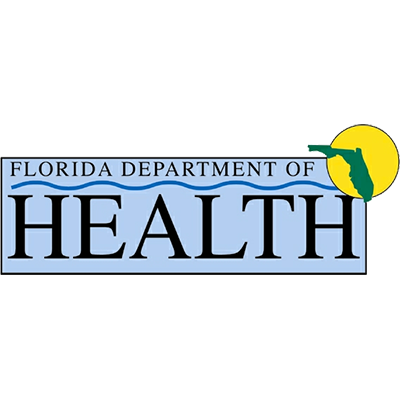Other resources: Residential, Detox, Florida Opioid Addiction Treatment Center
The opioid crisis continues to wreak havoc across the United States, even as it garners less attention than during the peak of the COVID-19 pandemic. Despite the shift in public focus, the statistics surrounding opioid addiction remain devastating. In 2023, opioid-related deaths in the U.S. reached over 112,000, surpassing fatalities from car accidents and gun violence combined. The national economic burden is staggering, estimated at $1.5 trillion, contributing to recent declines in life expectancy. The emergence of more potent drugs like xylazine and nitazenes only compounds the crisis, causing new waves of overdose deaths. You can read more about the Xylazine problem and it’s impact on addiction treatment in Florida here.
The Local Toll: Cities and Counties in Crisis
The impact of the opioid epidemic at the local level is equally harrowing. In Austin and Travis County, Texas, there were 546 opioid overdoses from 2020 to 2022, with fentanyl-related deaths increasing by 599%. Adams County, Colorado, saw prescription opioid overdose deaths triple, and fentanyl-related deaths increased eightfold between 2018 and 2021, costing the local economy $15.2 billion in one year. Yakima County, Washington, reported over 100 overdose deaths annually. Each local government in the U.S. faces its own grim statistics, reflecting the pervasive nature of the crisis. Panama City is a small city with many of these bigger city problems.
Beyond the numbers, the opioid epidemic inflicts immense suffering on individuals and communities. The loss of parents and children, job-related poverty, homelessness, and the social costs of treating uninsured individuals are profound. While substance use affects all demographics, it disproportionately impacts the homeless, Hispanics, Blacks, and men. Settlement funds from opioid manufacturers provide some financial relief, but they fall short of addressing the overall impact.
That is where a program like Project Save Lives can help the Panama City community. Project Save Lives (PSL) is a collaborative, citywide addiction treatment program, now based in hospitals in our area. Participants are identified as they enter the emergency room, and peer support specialists, individuals who have battled and survived addiction and co-occurring challenges themselves; help patients begin their journey to wellness and recovery. As one of the best rehabs in Florida, Florida Springs has a mission to better our community and impact people both in and outside of our addiction treatment facility.
Collaborative Solutions: A Multi-Faceted Approach
Addressing the opioid crisis requires a deep understanding of how addiction develops and a recognition that no single agency can tackle the problem alone. Many individuals become addicted to opioids through pain medication following medical procedures or unknowingly ingesting fentanyl-laced drugs. The ease of access and low cost of these substances exacerbate the problem once addiction takes hold.
Effective solutions necessitate collaboration among community groups, nonprofits, law enforcement, first responders, health providers, and state and federal officials. Local governments play a crucial role in leading and coordinating these efforts, ensuring resources are effectively utilized, and fostering partnerships with higher levels of government for additional support. Enhancing coordination among various stakeholders can significantly improve outcomes. The best rehabs in Florida, and any group providing Alcohol treatment in Florida, should consider themselves important stakeholders in this fight. Florida Springs is the best alcohol rehab in Florida, and also a top drug detox in Florida.
Successful Models of Collaboration
In Austin Texas: A collaborative effort involving Austin Public Health, Travis County Health and Human Services, Central Health, Integral Care, and other community-based organizations follows the CDC’s evidence-based guidance for substance use disorder mitigation. This coalition meets monthly to strategize and implement their mitigation plan.
Adams County, Colorado: Officials have developed a systematic, collective impact approach for opioid abatement, expecting to receive $467 million over 18 years. The Colorado Opioid Abatement Council oversees fund distribution, prioritizing regional collaboration with 312 local governments. The Adams County Opioid Abatement Council aligns with the statewide framework to allocate funds based on prioritized needs and policy opportunities.
The Rocky Mountain Partnership (RMP), a local nonprofit also in Colorado, supports the council’s work by ensuring data-driven, impactful investments. The council, comprising representatives from various sectors, uses public dashboards to maintain transparency and accountability.
Florida Springs and Project Save Lives are happy to be among the communities taking steps to do more when it comes to collaboration and drug and alcohol addiction treatment Florida.
Communication: Reducing Stigma and Raising Awareness
A critical component of addressing the opioid crisis is reducing the stigma associated with addiction. Communities are working to normalize the conversation about substance use disorders, educating the public that addiction is a chronic disease with effective treatments available. Sharing personal recovery stories and promoting the importance of naloxone are key elements of this communication strategy. At the best rehabs in Florida, including Florida Springs, the best alcohol rehab in Florida and a top drug rehab Florida, we believe we have a key role in ending the stigma around substance abuse rehab and treatment.
In Austin and Travis County, public information campaigns through the press, social media, and bus wraps aim to reduce stigma. Florida Springs is already engaged on social media, through local news stories, and here on our website. All the best drug rehabs Florida should be a unified voice on this issue, reducing the stigma of drug and alcohol treatment Florida.
Preventive Measures and Immediate Responses
Efforts to prevent opioid-related deaths include widespread education, increased availability of naloxone, and heightened awareness of overdose signs. Contracting with harm reduction organizations for services and outreach, funding peer recovery coaches, and deploying mobile street teams to assist overdose victims are vital strategies. These teams can initiate buprenorphine treatment in the field and manage patients until they see an addiction specialist.
Addressing Gaps: Funding and Policy Priorities
Many communities lack sufficient funding for critical resources like injectable Sublocade, fentanyl, and xylazine test strips. Coordination of care activities, essential for supporting individuals with substance use disorders, often suffer from inadequate funding. Grant support for data collection is crucial for informed decision-making and effective deployment of assets.
Stigma, blame, and shame hinder progress. Building relationships and collaborations with community partners, and supporting those in need through peer mentoring, medications, medical social work, and counseling, are essential steps. When communities unite to address the pain of their neighbors, real progress can be achieved. By learning from each other and fostering collaborative efforts, we can mitigate the harm caused by opioids and ease the suffering of countless individuals and communities. Together, we can make meaningful strides towards addressing this public health crisis. If you or a loved one need the best drug rehab Florida, or the best alcohol rehab Florida, please call us today at 850-403-6566.
By Tim Cannon
References
“OPIOID ADDICTION and Public Health Practices.” Published in the Journal: Public Management, May 2024. By WALKES, DESMAR; WEIDENBACH, KELLY N. ;HARRISON, ROBERT



